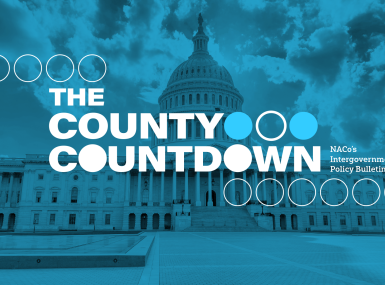Counties save on employee prescriptions with foreign drugs
Upcoming Events
Related News
Share |
Flagler County, Fla. commissioners have approved a plan to import prescription drugs through a Canadian broker that officials say could save employees 50 percent to 80 percent on some medications.
The company, CanaRx, will supply brand-name maintenance medications — such as those for high blood pressure or to lower cholesterol. Participation in the program will be voluntary, according to Joe Mayer, the county’s director of community services. And the county will continue to offer an other prescription benefit through its onsite employee health clinic or retail pharmacies for generics.
“Any of our employees that are on those types of (maintenance) meds can choose to participate. And the carrot for the employee is that there are no copays for them,” he said. “They would get that free of charge, and the county health plan would pick up the cost.”
Flagler is projected to realize savings of 54 percent, he added, which offsets costs to the county. The company makes a profit on a “small” markup from the cheaper foreign drugs, said Mark Mousty, a spokesman for the prescriptions broker. The program will be offered to employees during open enrollment this month and is slated to launch in October, the start of the county’s fiscal year, Mayer said.
He says he was skeptical at first, when he heard about the program at a Florida Association of Counties meeting. Highland County, Fla. has a similar program through the same provider. But an analysis CanaRx provided to the Flagler County Board showed the potential for significant savings.
The company, based in Windsor, Ontario, looked at the top 350 drugs being prescribed for employees — without personal data — and found that the county spent $265,000 on them in 2014, Mayer said, but that it could have saved more than $145,000 through the drug importation program.
Schenectady County, N.Y. has had a similar program since 2004, County Attorney Chris Gardner said. As a result, the county is spending less on prescription drugs than in 2003. Back then, he said, prescription costs were poised to overtake medical costs.
Importation of drugs from other countries presents a dilemma for the Food and Drug Administration.
On the one hand, FDA says “… it is illegal for individuals to import drugs into the United States for personal use.” The agency says it can’t ensure the authenticity, safety and effectiveness of drugs it hasn’t approved. But it does make exceptions.
At the same time, FDA policy also states that it “typically” doesn’t object to personal imports of such drugs under certain circumstances, including the following: The drug isn’t considered to pose an unreasonable risk; the individual importing the drug verifies in writing that it is for his or her own use and provides contact information for the doctor providing treatment or shows the product is for the continuation of treatment begun in a foreign country; and “generally, not more than a 3-month supply of the drug is imported.”
Counties would be unable to import medications for group populations, such as nursing home residents and jail inmates, Gardner said, “because that wouldn’t be personal use.”
U.S. pharmaceutical interests have not sat idly by as foreign drug importation programs have sprung up. In 2013, the Maine Legislature passed what’s believed to be the first-in-the nation law that allowed residents to purchase mail-order drugs from other countries. Pharmacy groups sued the state, and in February, a Maine federal judge struck down the law, the Maine Pharmacy Act.
In her opinion, the judge said the law “compromises the tightly regulated structure set up by the Food, Drug & Cosmetic Act and the federal government’s ability to ‘speak with one voice’ when it regulates foreign commerce.”
The global market for pharmaceuticals is expected to grow to nearly $1.3 trillion by 2018, according to Global Outlook for Medicines Through 2018, a report of the IMS Institute for Healthcare Informatics. With that kind of money involved, there are opportunities for exploitation, according to Bona E. Benjamin, a spokesperson for the American Society of Health- System Pharmacists.
“Drugs to our members are therapy and treatment,” she said. “But drugs to some people are a commodity that has great value, and so we’re concerned about counterfeiting; we’re concerned about adulteration, for example.”
Proponents of foreign drug importation see irony in the status quo, because many, if not most, of the drugs prescribed for U.S. residents are manufactured abroad. Programs like Flager and Schenectady counties’ are supplied with drugs from Canada, the United Kingdom, Australia and New Zealand, countries where the government regulates the price of drugs. Only about 20 percent of the drugs imported by CanaRx are from Canada, according to Mousty, who made a presentation to the Flagler County Board. Eighty percent come from the other three “Commonwealth” countries.
Schenectady County’s Gardner said, “It’s probably unfortunate that the United States doesn’t regulate the cost of prescription medications, like most other countries do. So we’re taking advantage of that regulation in other countries to save money for our employees and for our taxpayers.”
House and Senate versions of the Safe and Affordable Drugs from Canada Act of 2015 — a bill that would permit Americans to buy prescription drugs from “an approved pharmacy” in Canada — are currently stalled in Congress.
Attachments
Related News

County Countdown – Dec. 15, 2025
Every other week, NACo's County Countdown reviews top federal policy advocacy items with an eye towards counties and the intergovernmental partnership.

U.S. Department of Agriculture unveils $700 million for regenerative agriculture
On December 10, U.S. Secretary of Agriculture Brooke Rollins announced the launch of a $700 million pilot program to support regenerative agriculture practices across the country.

HHS releases rule repealing federal nursing home staffing mandate, supporting county long term care facilities
On December 2, the U.S. Department of Health and Human Services (HHS) published an interim final rule that repeals the federal nursing home staffing mandate, a regulation that would have required long-term care facilities to meet strict minimum staffing levels.